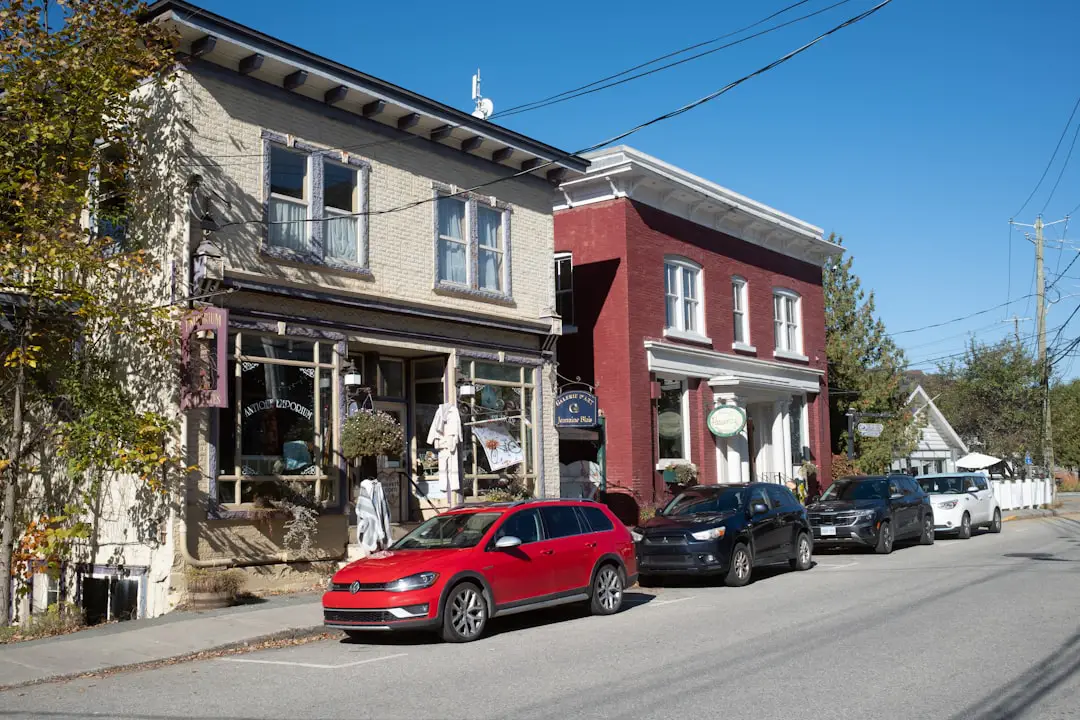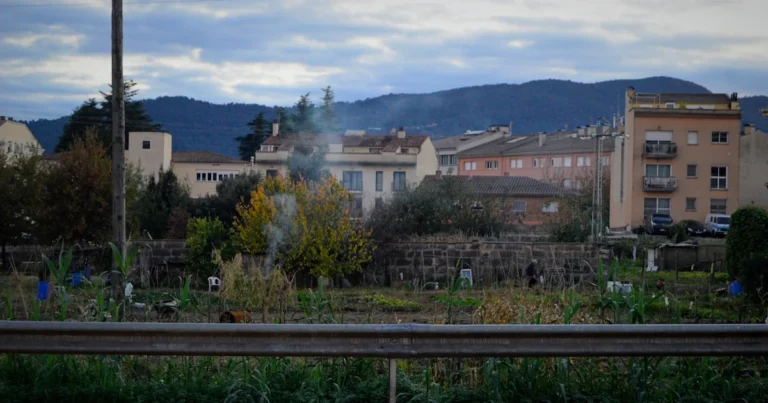Support our educational content for free when you purchase through links on our site. Learn more
Imagine a city block transformed from gray concrete into a lush, buzzing garden where neighbors grow fresh veggies, bees hum, and the air feels cooler. Could these small patches of green really help tackle one of the biggest challenges of our time—climate change—on a global scale? Spoiler alert: Yes, they can! But how exactly do community gardens punch above their weight in this climate fight? And what can YOU do to help turn local plots into global solutions?
In this article, we dig into 9 powerful ways community gardens mitigate climate change, from capturing carbon in the soil to cooling urban heat islands and boosting biodiversity. We’ll explore the science, share inspiring stories, and reveal how scaling these grassroots efforts worldwide could sow the seeds for a greener, more resilient planet. Ready to get your hands dirty and learn how your neighborhood garden can make a global impact? Let’s grow together!
Key Takeaways
- Community gardens sequester carbon and improve soil health, turning air pollution into fertile earth.
- Growing food locally cuts down on transportation emissions, reducing the carbon footprint of our meals.
- Gardens help cool cities, combatting the urban heat island effect and improving air quality.
- They foster biodiversity, supporting pollinators and local ecosystems critical for food production.
- Community gardens build food security and climate resilience in vulnerable communities.
- Policy support and funding are vital to expand gardens globally and maximize their climate benefits.
- YOU can make a difference by volunteering, donating, or starting a garden in your community!
👉 Shop Gardening Essentials:
- Fiskars Garden Tool Set: Amazon | Walmart | Fiskars Official Website
- Miracle-Gro Organic Compost: Amazon | Home Depot | Miracle-Gro Official
Table of Contents
- ⚡️ Quick Tips and Facts
- The Root of the Problem: Understanding Climate Change’s Global Grip 🌍
- What’s Sprouting? Defining Community Gardens in the Climate Fight 🌱
- The Green Revolution in Your Backyard: How Community Gardens Tackle Climate Change Head-On (9 Powerful Ways!) 💪
- Carbon Sequestration & Soil Health: Turning Air into Earth 🌬️➡️🌍
- Reducing Food Miles & Emissions: Local Harvest, Global Impact 🚚💨
- Urban Heat Island Effect Mitigation: Cooling Down Our Concrete Jungles 🏙️❄️
- Water Conservation & Stormwater Management: Thirsty Plants, Smart Solutions 💧🧠
- Boosting Biodiversity & Pollinator Support: A Buzzing Ecosystem 🐝🦋
- Waste Reduction & Composting Cycles: From Scraps to Super Soil ♻️🌱
- Fostering Food Security & Local Resilience: Growing Community, Growing Hope 🍎🤝
- Empowering Education & Community Engagement: Sowing Seeds of Awareness 🗣️💡
- Promoting Green Infrastructure & Sustainable Living: Building Better Blocks 🏘️🌳
- From Plot to Planet: Scaling Up Local Impact to a Global Scale 🌎
- Cultivating Change: Policy, Funding, and International Cooperation for Global Garden Growth 🤝
- Weeding Out Challenges: Obstacles to Global Community Garden Expansion 🚧
- Sowing the Seeds of the Future: The Long-Term Vision for Community Gardens & Climate Resilience 🚀
- Your Hands in the Soil: How YOU Can Get Involved & Make a Difference! 🙌
- Conclusion: A Greener Tomorrow, One Garden at a Time 💚
- Recommended Links: Dig Deeper! 🔗
- FAQ: Your Burning Questions Answered 🔥
- Reference Links: Our Sources & Further Reading 📚
Quick Tips and Facts
As gardeners at Community Gardening™, we believe that community gardens can play a significant role in mitigating the effects of climate change on a global scale. To learn more about the benefits of community gardens, check out our article on community garden benefits to the global community. Here are some quick tips and facts to get you started:
- Community gardens can help reduce carbon emissions by promoting local food production and reducing transportation emissions.
- They can also help mitigate the urban heat island effect by providing green spaces and shading.
- Community gardens can serve as educational hubs, teaching people about sustainable gardening practices and climate change mitigation.
- They can also provide community engagement opportunities, fostering a sense of community cohesion and social connection.
- According to the United Nations, community gardens can help promote food security and sustainable agriculture.
The Root of the Problem: Understanding Climate Change’s Global Grip
What is Climate Change?
Climate change refers to the long-term warming of the planet, which is primarily caused by the increasing levels of greenhouse gases in the Earth’s atmosphere. These gases, such as carbon dioxide and methane, trap heat from the sun and prevent it from being released back into space. To learn more about climate change, visit the National Oceanic and Atmospheric Administration (NOAA) website.
Causes of Climate Change
The main causes of climate change are:
- Burning of fossil fuels: The burning of coal, oil, and gas for energy releases large amounts of carbon dioxide into the atmosphere.
- Deforestation: The clearance of forests for agriculture and other purposes releases carbon dioxide and reduces the ability of forests to act as carbon sinks.
- Agriculture: The production of meat, especially beef, and other animal products leads to the release of methane and other greenhouse gases.
What’s Sprouting? Defining Community Gardens in the Climate Fight
What are Community Gardens?
Community gardens are shared green spaces where people come together to grow their own fruits, vegetables, and flowers. They are often located in urban areas and provide a space for people to connect with nature and with each other. For more information on community gardens, check out our category on community garden policies.
Benefits of Community Gardens
Community gardens have numerous benefits, including:
- Improved mental and physical health: Gardening has been shown to reduce stress and improve overall well-being.
- Increased food security: Community gardens provide access to fresh, healthy produce, especially in areas where it may be scarce.
- Community engagement: Community gardens foster a sense of community and provide opportunities for people to connect with each other.
The Green Revolution in Your Backyard: How Community Gardens Tackle Climate Change Head-On (9 Powerful Ways!)
1. Carbon Sequestration & Soil Health: Turning Air into Earth
Community gardens can help sequester carbon from the atmosphere by promoting healthy soil practices. This can be achieved through the use of compost, cover crops, and no-till farming. For more information on soil health, check out our article on edible plants.
2. Reducing Food Miles & Emissions: Local Harvest, Global Impact
Community gardens can help reduce food miles by providing fresh produce locally. This can help reduce transportation emissions and support local economies. To learn more about reducing food miles, visit the United States Department of Agriculture (USDA) website.
3. Urban Heat Island Effect Mitigation: Cooling Down Our Concrete Jungles
Community gardens can help mitigate the urban heat island effect by providing green spaces and shading. This can help reduce the temperature in urban areas and improve air quality. For more information on urban heat island effect mitigation, check out our category on garden design ideas.
4. Water Conservation & Stormwater Management: Thirsty Plants, Smart Solutions
Community gardens can help conserve water by using efficient irrigation systems and promoting water-saving practices. They can also help manage stormwater by using rain gardens and permeable pavements. To learn more about water conservation, visit the Environmental Protection Agency (EPA) website.
5. Boosting Biodiversity & Pollinator Support: A Buzzing Ecosystem
Community gardens can help promote biodiversity by providing a habitat for pollinators and other wildlife. They can also help support local ecosystems by using native plants and promoting ecological balance. For more information on biodiversity, check out our category on benefits of community gardens.
6. Waste Reduction & Composting Cycles: From Scraps to Super Soil
Community gardens can help reduce waste by promoting composting and recycling. They can also help create nutrient-rich soil by using compost and manure. To learn more about waste reduction, visit the National Waste & Recycling Association website.
7. Fostering Food Security & Local Resilience: Growing Community, Growing Hope
Community gardens can help promote food security by providing access to fresh, healthy produce. They can also help foster local resilience by promoting community engagement and social connection. For more information on food security, check out our category on community garden events.
8. Empowering Education & Community Engagement: Sowing Seeds of Awareness
Community gardens can help promote education and community engagement by providing opportunities for people to learn about sustainable gardening practices and climate change mitigation. To learn more about education and community engagement, visit the National Education Association website.
9. Promoting Green Infrastructure & Sustainable Living: Building Better Blocks
Community gardens can help promote green infrastructure and sustainable living by providing a model for eco-friendly design and community-led development. For more information on green infrastructure, check out our category on garden design ideas.
From Plot to Planet: Scaling Up Local Impact to a Global Scale
To scale up the impact of community gardens, we need to think globally and act locally. This can be achieved by:
- Sharing knowledge and resources: Community gardens can share their knowledge and resources with other gardens and communities around the world.
- Promoting policy change: Community gardens can advocate for policy changes that support sustainable gardening practices and climate change mitigation.
- Building partnerships: Community gardens can build partnerships with other organizations and communities to promote global cooperation and collective action.
Cultivating Change: Policy, Funding, and International Cooperation for Global Garden Growth
Policy Change
Policy change is crucial for promoting sustainable gardening practices and climate change mitigation. This can be achieved by:
- Advocating for policy changes: Community gardens can advocate for policy changes that support sustainable gardening practices and climate change mitigation.
- Supporting climate-friendly policies: Community gardens can support policies that promote renewable energy, energy efficiency, and green infrastructure.
Funding
Funding is essential for supporting community garden initiatives and climate change mitigation efforts. This can be achieved by:
- Applying for grants: Community gardens can apply for grants that support sustainable gardening practices and climate change mitigation.
- Seeking private funding: Community gardens can seek private funding from foundations, corporations, and individual donors.
International Cooperation
International cooperation is crucial for promoting global cooperation and collective action. This can be achieved by:
- Sharing knowledge and resources: Community gardens can share their knowledge and resources with other gardens and communities around the world.
- Building partnerships: Community gardens can build partnerships with other organizations and communities to promote global cooperation and collective action.
Weeding Out Challenges: Obstacles to Global Community Garden Expansion
Despite the many benefits of community gardens, there are several challenges that need to be addressed. These include:
- Limited access to land: Community gardens often face challenges in accessing land and resources.
- Lack of funding: Community gardens often face challenges in securing funding and support.
- Climate change: Community gardens are vulnerable to climate change, which can impact crop yields, water availability, and soil health.
Sowing the Seeds of the Future: The Long-Term Vision for Community Gardens & Climate Resilience
The long-term vision for community gardens is to promote climate resilience and sustainable gardening practices. This can be achieved by:
- Promoting education and awareness: Community gardens can promote education and awareness about climate change and sustainable gardening practices.
- Supporting policy change: Community gardens can support policy changes that promote sustainable gardening practices and climate change mitigation.
- Building partnerships: Community gardens can build partnerships with other organizations and communities to promote global cooperation and collective action.
Your Hands in the Soil: How YOU Can Get Involved & Make a Difference!
There are many ways to get involved and make a difference in community gardens and climate change mitigation. These include:
- Volunteering: You can volunteer at a local community garden or organization that promotes sustainable gardening practices and climate change mitigation.
- Donating: You can donate to organizations that support community garden initiatives and climate change mitigation efforts.
- Spreading awareness: You can spread awareness about climate change and sustainable gardening practices by sharing information with your friends and family.
Conclusion: A Greener Tomorrow, One Garden at a Time 💚

Well, we’ve dug deep into the soil of community gardens and their powerful potential to combat climate change on a global scale. From carbon sequestration to urban heat island mitigation, from boosting biodiversity to building resilient local food systems, these green oases are much more than pretty patches of plants—they are living, breathing climate warriors.
Sure, challenges like land access and funding can be pesky weeds in the garden, but with policy support, community engagement, and international cooperation, these obstacles can be overcome. Remember, every seed planted in a community garden is a step toward a healthier planet and a stronger community.
So, whether you’re a seasoned gardener or a curious newbie, your hands in the soil can help sow the seeds of change. Ready to get your hands dirty and make a difference? The planet—and your neighborhood—will thank you.
Recommended Links: Dig Deeper! 🔗
Looking to equip your community garden or deepen your knowledge? Here are some top picks:
Gardening Tools & Supplies
- Fiskars Garden Tool Set: Amazon | Walmart | Fiskars Official Website
- Miracle-Gro Organic Choice Compost: Amazon | Home Depot | Miracle-Gro Official
Books on Sustainable Gardening & Climate Action
- “The Community Gardening Handbook” by Ben Raskin: Amazon
- “Drawdown: The Most Comprehensive Plan Ever Proposed to Reverse Global Warming” edited by Paul Hawken: Amazon
- “Gaia’s Garden: A Guide to Home-Scale Permaculture” by Toby Hemenway: Amazon
FAQ: Your Burning Questions Answered 🔥
How can community gardens contribute to carbon sequestration and reduce greenhouse gas emissions?
Community gardens enhance carbon sequestration primarily through healthy soil management. By incorporating organic compost, mulching, and cover crops, gardens increase soil organic matter, which traps carbon underground. Additionally, growing plants absorb CO₂ during photosynthesis, reducing atmospheric greenhouse gases. By producing food locally, community gardens also cut down on food miles, reducing emissions from transportation and packaging. Studies from the EPA confirm that urban green spaces significantly contribute to carbon capture and emission reductions.
What role do urban community gardens play in enhancing biodiversity and ecosystem services in cities?
Urban community gardens act as biodiversity hotspots by providing habitats for pollinators like bees and butterflies, birds, and beneficial insects. They often incorporate native plants, which support local ecosystems and improve pollination services essential for food production. Gardens also contribute to stormwater management, filtering runoff and reducing urban flooding risks. According to the Chesapeake Bay Foundation, green infrastructure like community gardens is vital for improving urban ecosystem health and resilience.
Can community gardens help build climate resilience in vulnerable communities and promote food security?
Absolutely! Community gardens empower vulnerable communities by increasing access to fresh, nutritious food, which is critical during climate disruptions that affect food supply chains. They also foster social cohesion, enabling communities to share resources and knowledge, enhancing overall resilience. Gardens improve local microclimates, reduce heat stress, and manage stormwater, mitigating climate impacts. The UNFCCC highlights community-led green spaces as key tools for adaptation and resilience in urban settings.
What are some successful examples of community-led initiatives that use gardening as a strategy for climate change mitigation and adaptation?
One inspiring example is the Keystone 10 Million Trees Partnership in Pennsylvania, which combines tree planting with community engagement to combat climate change and improve water quality. Another is the Hopewell Restoration Project in Virginia, which uses green infrastructure, including community gardens, to reduce stormwater runoff and urban heat. Globally, cities like New York and London have embraced community gardens as part of their climate action plans, integrating them into urban renewal projects. These initiatives demonstrate how local action can ripple out to create global impact.
How do community gardens help mitigate the urban heat island effect?
Community gardens introduce vegetation and shade into densely built environments, which absorb less heat than concrete and asphalt. Plants cool the air through evapotranspiration, reducing local temperatures by several degrees. This cooling effect can be especially significant in low-income neighborhoods that often suffer the most from urban heat islands. The National Democratic Institute emphasizes the importance of green spaces in reducing heat stress and improving urban livability.
Read more about “10 Urban Gardening Initiatives Transforming Cities in 2025 🌱”
What policies support the expansion of community gardens for climate benefits?
Policies that facilitate land access, provide funding, and integrate community gardens into urban planning are crucial. Zoning laws that allow for green spaces, grants for garden infrastructure, and incentives for sustainable practices empower communities to establish and maintain gardens. Some cities have adopted climate resilience plans that explicitly include community gardens as part of their green infrastructure strategies. For insights on policy frameworks, see our community garden policies category.
Reference Links: Our Sources & Further Reading 📚
- United Nations Framework Convention on Climate Change (UNFCCC): Cities and Local Action to Combat Climate Change
- Chesapeake Bay Foundation: Climate Change Impacts and Solutions
- National Democratic Institute: Climate Change: How the Global Issue Impacts Our Own Backyards
- Environmental Protection Agency (EPA): Green Infrastructure
- United States Department of Agriculture (USDA): Sustainable Agriculture
- National Oceanic and Atmospheric Administration (NOAA): Climate Change Overview
Ready to roll up your sleeves and join the green revolution? Your community garden awaits! 🌿🌎






